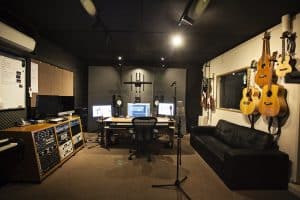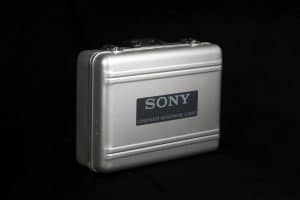Arranging and voicing for different sized bands
Arranging is a broad topic and it is not nearly as intimidating as most people think. Recording studios that focus on film music in particular need these techniques. You don’t necessarily need an impossible set of skills and years of experience. Rather some basic principles to help you understand how instruments blend. If you are looking to “fatten up” your sound and expand from the typical 4 – 5 piece rock pop band, consider these factors:
Thinning out the rhythm section
When adding brass remember to thin out the harmony instruments like piano and guitar when arranging. Often just removing a few notes from the voicings of accompaniment instruments can really create space. This allows brass harmonies to breath. Also ask the rhythm players to comp around the brass arrangements. Recording or re-recording chordal instruments after the brass lines have been recorded is better.
Ranges and tonality
Research the optimal range and tonalities of the instruments you want to add. For example if you were going to add a cello in multiple layers, try and get a grasp of what a cello sounds like in different octaves. I use cello for an example because it is remarkably versatile. It can sound extraordinarily warm in the middle register, (a 6th or so either side of middle C). With this in mind you may be able to cover the role of a viola or even a trombone for ballad style voicing.
Like wise, even the violin itself has different character in different octaves. You will find a violin will need far more overdubbing to sound smooth. Extra layers are essential to remove the harshness from the upper ranges of a violin. This is evidenced in many of the samples and plug-ins that allow for this factor.
Using mutes
Remember the availability of mutes and different techniques. For example, dramatic changes in tonality can be achieved with a trumpet by simply changing mutes. A cup mute can give a darker, swallowed and less intrusive sound. A straight mute will punctuate the instrument and cause it to stand out even at lower volumes.
Using unusual instruments
Consider the use of unusual orchestral instruments. A French Horn can add surprising clarity and smoothness to a ballad arrangement. Long tones on a French horn blended with trombone and flugelhorn can create a warm mystical flavour (think unicorns). This steers the sound away from the cliché’s of a standard brass line up.
Panning and mixing
Panning and mic positioning can influence the sound dramatically. Creating a natural “orchestral spread” is vital to give a fuller more authentic sound to your arrangements. Also using the correct eq and reverb for each instrument is vital. In recording studios, most of the magic happens around mixing.
Simple lines
Recording studio work can be taxing so don’t over think the lines. Often a simple 3 or 4 note pentatonic motif with some basic syncopation is sufficient for brass lines. Such lines can be sketched out on a guitar or taken from motifs and ideas with in the existing melody. Very often the first idea that comes into your head will be the one that is most congruent with the style of the song. After this point it is simply a matter of trialing the lines with the brass players and allowing them to suggest appropriate changes! Remember they play their instrument day and night and certain phrases “roll off the mouthpiece” easier than others.
Involving the players
Related to the previous point: Let the brass players experiment with their own lines. You could ask them to perform multiple takes with different inflections, fall offs, flutter tongues and blending techniques and even different turns of phrase. In recording studios this can reveal surprisingly workable lines and add to the originality of the arrangement as a whole.
Balancing instrument velocity
Recording studio equipment allows management of volume before mixing! Brass and wind instruments are not so different to tube amps and have different points of volume response for tonality. This is one of the main reasons they are far superior to any samples or plugins. Similarly, the interval between notes in a voicing can affect the impact greatly.
For example: Shifting the trombone part up a 3rdor 4thand closing the gap with the trumpet can create a much thicker sound depending on over tones in a composition. Be conscious of harmonics and the power of a 5thas opposed to the relative gentleness of a third. Bear in mind the science of the instruments and listen to multiple options. Sometimes it is simply not possible to tell on paper what a blend will sound like! Experimenting with voicing’s and changing intervals during a session can reveal some gorgeous sounds. The recording studio itself may have certain frequencies that respond to different notes in the same room.




